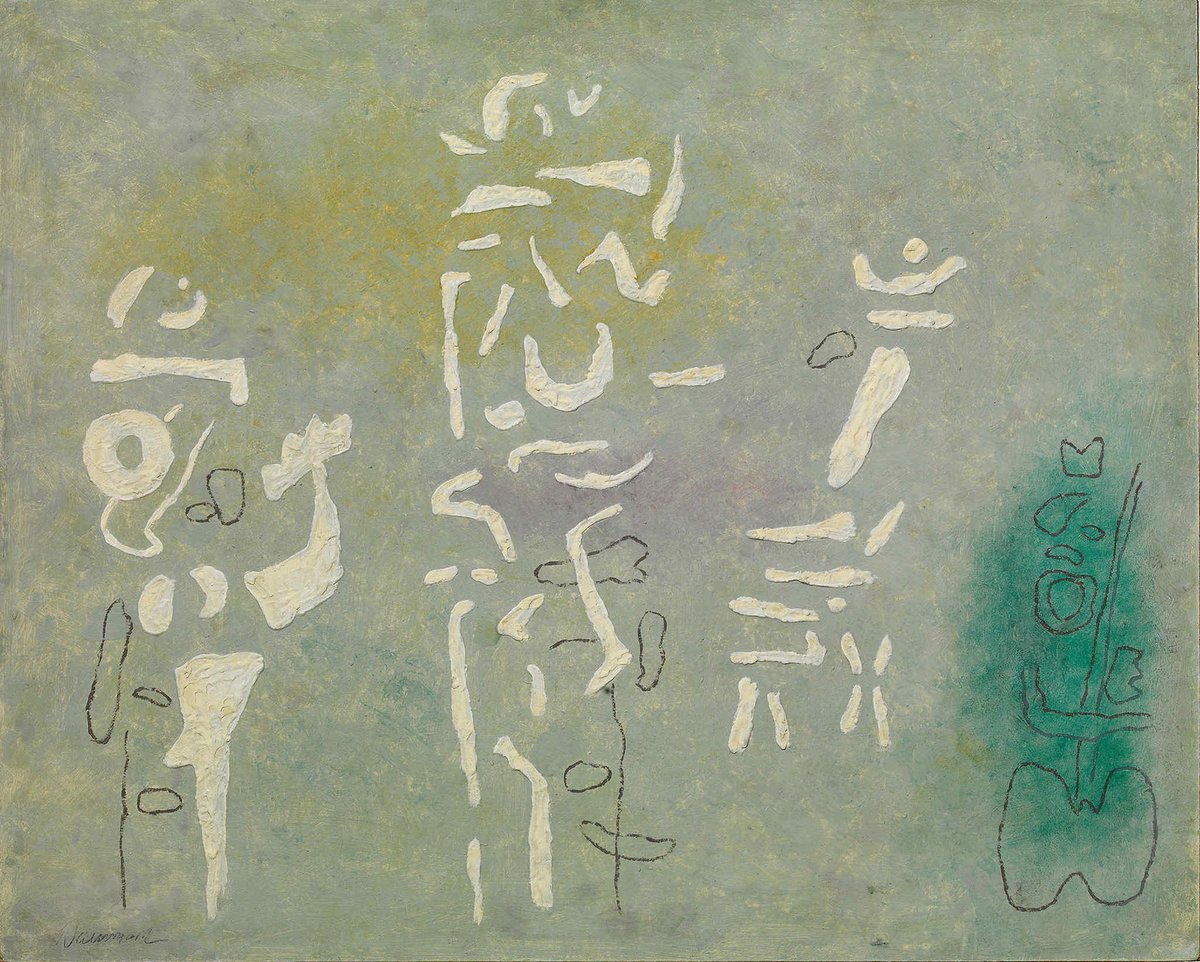Mag. art. Vera Ulrike Palm
Innovation or Replacement? Art Technological Research on Paintings of Willi Baumeister between 1930 and 1955

Öl mit Kunstharz, Tempera und Spachtelkitt. 65 x 81 cm
Oil, synthetic resin, tempera, putty. 65 x 81 cm
Privatsammlung
private collection
© CC 3.0 Lizenz / Willi Baumeister Stiftung
https://willi-baumeister.org/de/werk/ur-schanabi-auf-gr%C3%BCn
This PhD project investigates the reasons and the form in which the painter Willi Baumeister (1885 – 1955) dealt with innovative painting materials between 1930 and 1955. This research project focusses on Willi Baumeister as an artist who is characterized by his eagerness to experiment with new materials. His intensive preoccupation with innovative materials is also reflected in the painting technique of his later paintings. Questions examined are:
Which synthetic or semi-synthetic materials did Baumeister use? Was his motivation more due to the war-related scarcity of materials or his interest in new products from the chemical industry or was he attracted to new artistic means of expression? This research project investigates these questions with the help of art-technological research on Baumeister's painting technique. Written sources are taken into account as well as the art-technological examination of selected paintings. Particular attention will be paid to the composition of the binder. With the help of contemporary material, written sources and the investigation of historical material samples, the knowledge gained will be classified in the context of the history of the time and technology.
By considering Baumeister's painting technique of the mature creative period from several perspectives, fundamental knowledge of the use of synthetic resins and modified natural substances by one of the most important artists of German modernism can be gained. This work thus represents a link to art-historical research and now also opens up Baumeister's oeuvre from an art-technological point of view.
Furthermore, this PhD project aims to contribute to research into the meaning and use of early synthetic materials in art and to use this knowledge in order to develop adequate conservation strategies for the art objects of this time.
Personal Data
Ulrike Palm studied conservation of paintings and sculptures at the Academy of Fine Arts in Vienna. She received the performance scholarship from the Academy of Fine Arts Vienna. In her diploma thesis, she examined the polychromy of two Gothic sculptures in terms of art technology and in comparison with historical sources. Another focus was on the conservation and restauration of the objects. Based on ethical considerations and conservation principles, a concept could be implemented that makes it possible to visually integrate the appearance of the 19th century while preserving all paint layers. The diploma thesis was awarded the Würdigungspreis of the Academy of Fine Arts.
Since her studies she has worked for museums and institutions such as the Austrian Federal Monuments Authority and the Castles and Palaces Salzburg. She has also completed a two-year academic traineeship at the Landesmuseum Württemberg.
Since 2021, Ulrike Palm has been an associated member of the Graduate School “Framework Change”. Her area of interest includes particular artistic techniques, art-technological research in an interdisciplinary cooperation as well as the communication of art-technological research, conservation and its results to a broad audience.
